Parametric Diagram
Overview
Parametric diagrams can be used to describe the constraints between systems using mathematical formulas, etc., and perform analysis such as identifying parameters important for performance.
This page explains the operations for using parametric diagrams in the following order.
- Place parametric diagrams
- Define constraint properties
- Define relationships
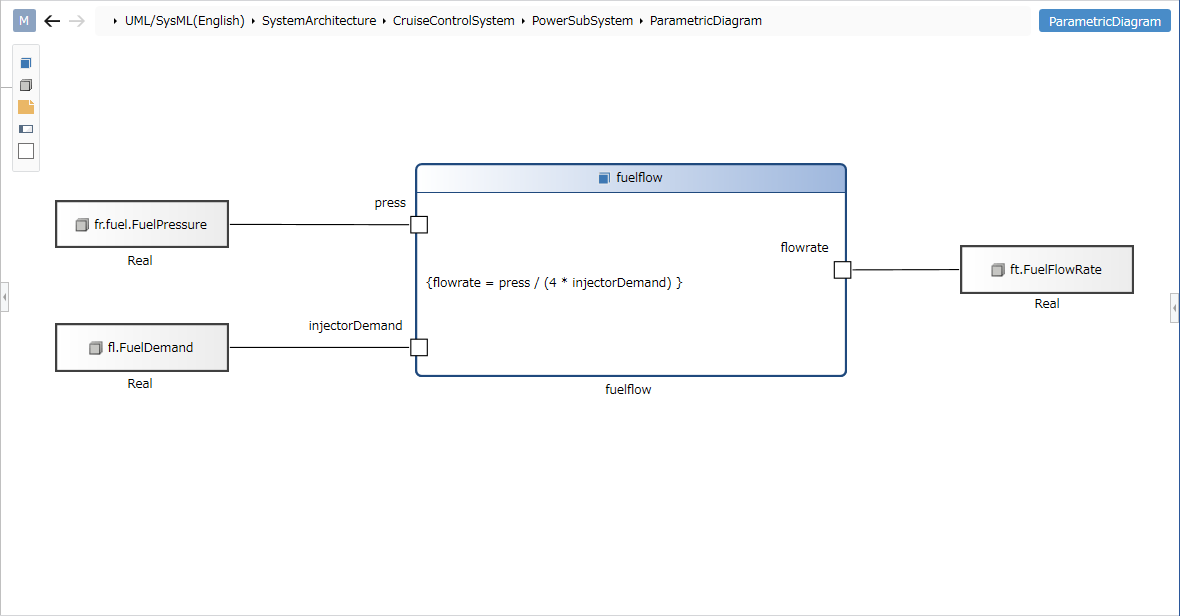
Place the parametric diagram
To place a parametric diagram, follow these steps:
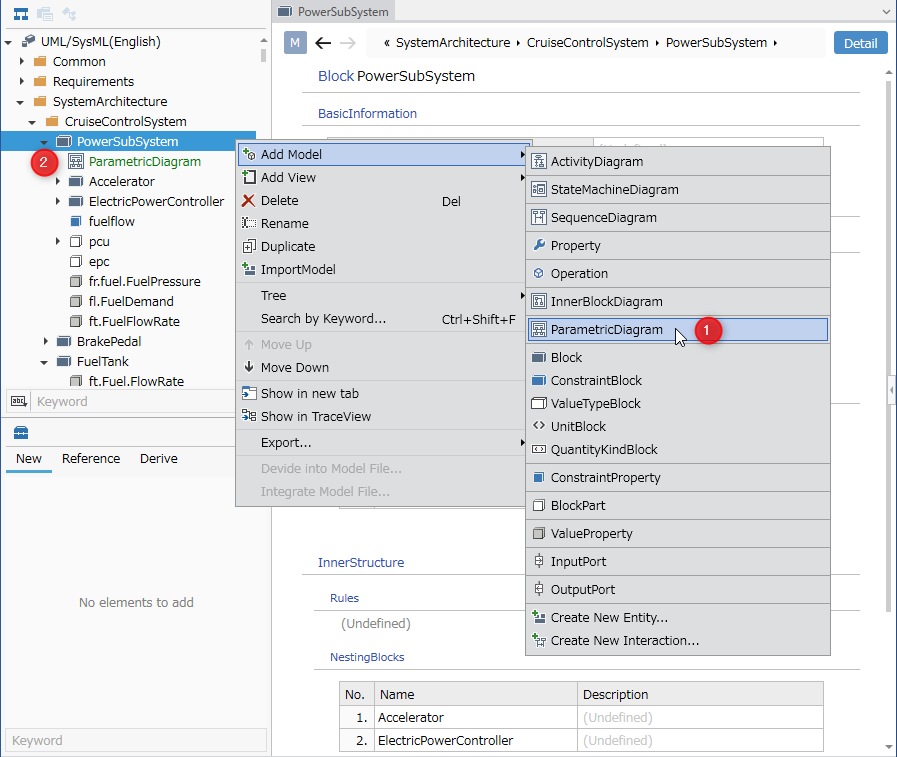
- Select the block in the model navigator and click Add Model > Parametric Diagram in the context menu.
- The parametric diagram is placed as a child element of the selected block.
Define constraint properties
Add constraint properties
To add constraint properties, follow these steps:
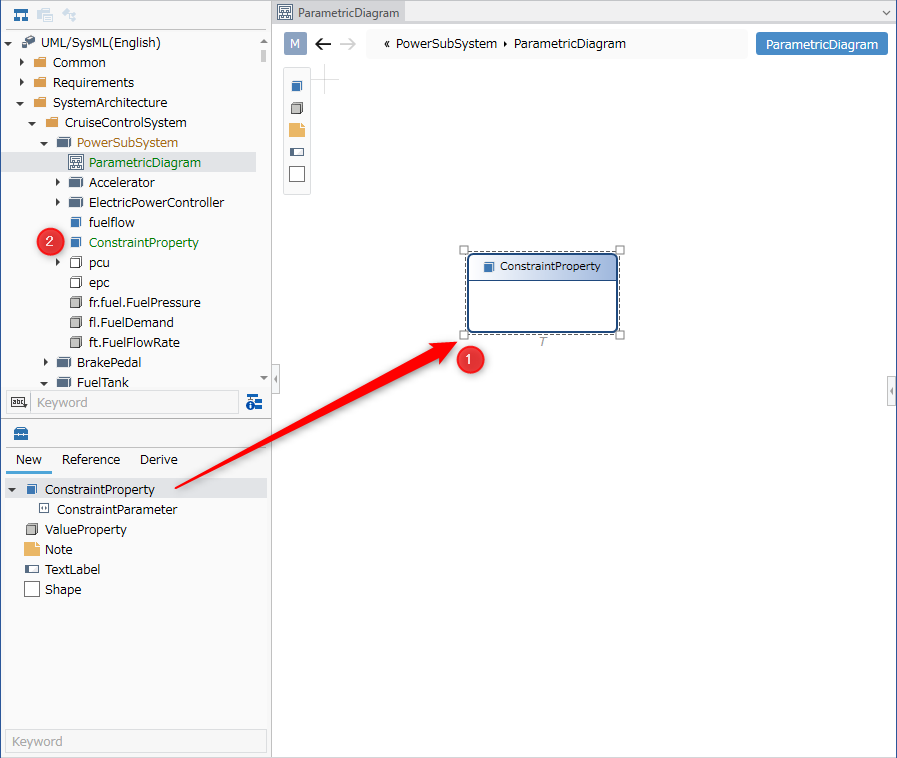
- Drag and drop [Constraints] from the toolbox onto the displayed parametric diagram.
- Constraint properties are placed as sibling elements of the displayed parametric diagram.
In a parametric diagram, you can place the following elements displayed in the toolbox:
| Icon | Name |
|---|---|
| Constraints | |
| Constraint parameters | |
| Value | |
| Note | |
| Label | |
| Shape |
[Constraint parameters] are placed as port shapes in [Constraints](constraint properties), but cannot be added from the toolbox.
By setting a constraint block as the constraint property type, the constraint parameters defined in the constraint block will be reflected on the diagram.
Add stereotypes to constraint properties
To add a stereotype, follow these steps:

- Select a constraint property.
- Click the Add button in the Basic information > Stereotype field in the Property Inspector to display the choices.
- Select a stereotype and press the [OK] button to set the stereotype to the constraint property and display the stereotype above the constraint property shape.
Stereotype choices can be defined in the package model's Detail view.
Once you have added a stereotype, you can edit it from the parametric diagram by following these steps:
- Double-click the stereotype displayed in the constraint properties to enter the editing state.
- If you change the stereotype and confirm the edit, it will be reflected on the parametric diagram and the stereotype of the constraint property will be changed.
Set the type
To set the type for a constraint property, follow these steps:
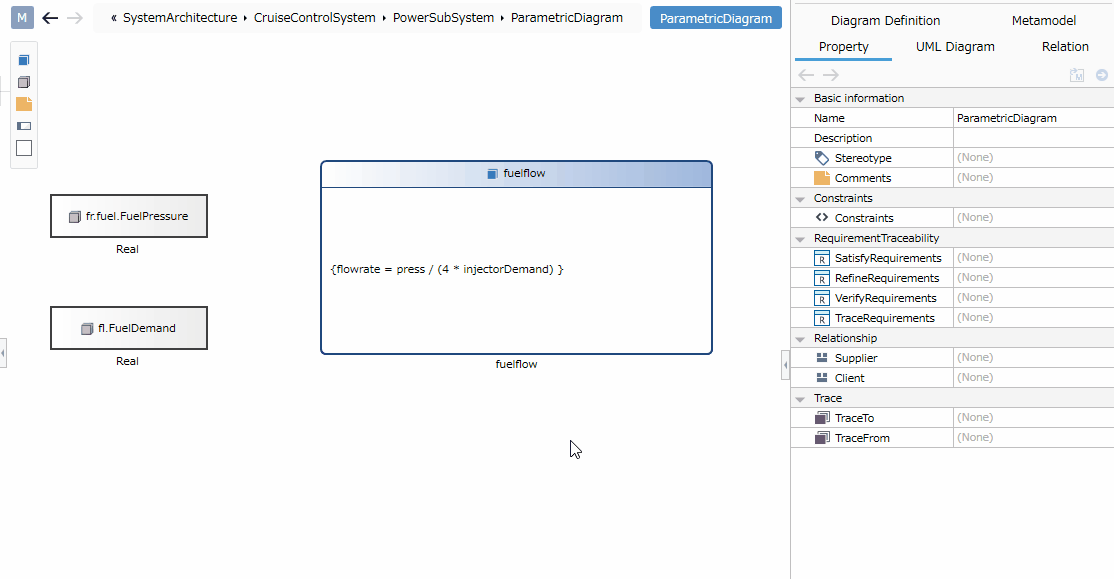
- Select a constraint in the displayed parametric diagram to display the Property inspector.
- Click the [+] button in the [Constraints] property, select the constraint block in the finder that appears, and press the [OK] button.
- The type is set in the constraint property, and the constraint parameters defined in the constraint block are displayed as ports in the constraint shape on the parametric diagram.
Describe the content (formula)
To write the content (formula) in the constraint property, follow the steps below.
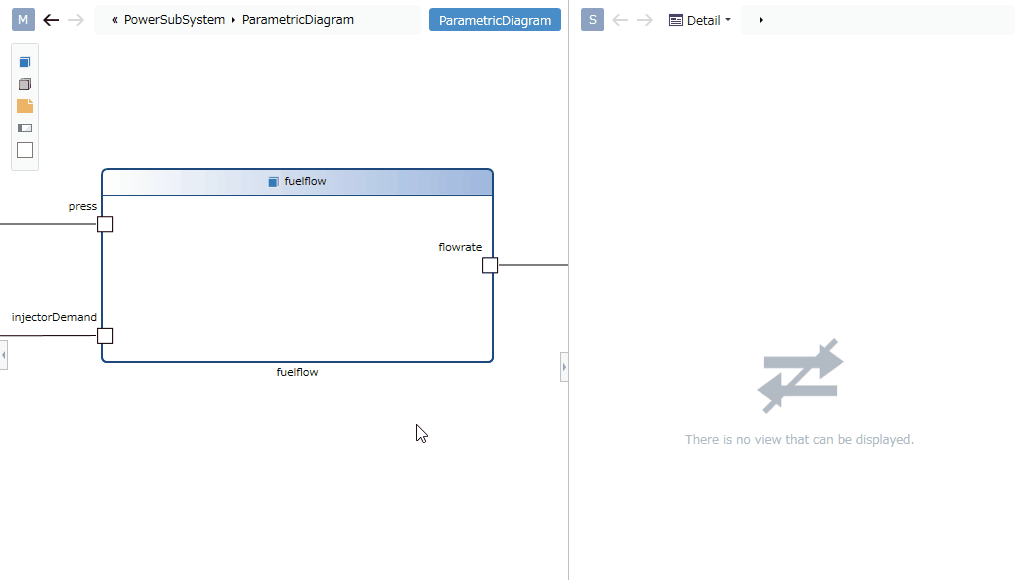
- Open the subeditor in advanced mode and select the constraint property in the parametric diagram above the main editor.
- Enter the formula in [Constraint Content] of the constraint property on the sub-editor and confirm it, and it will be reflected on the parametric diagram.
Usually, variables used in the constraint content (formula) are displayed as constraint parameters.
Define relationships
To define the relationship between constraint parameters and values, follow these steps:
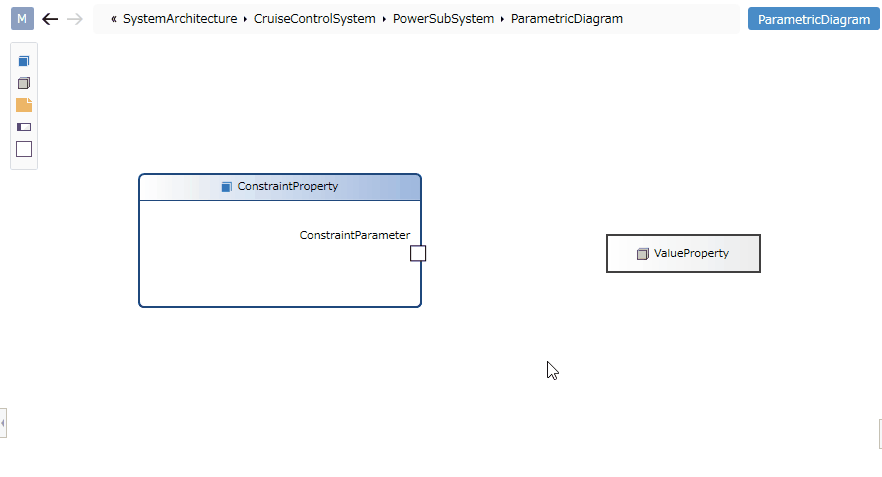
- Move the pointer over the constraint parameter you want to associate.
- Drag the [▲] icons that appear on all sides of the constraint parameter and drop them onto the value you want to associate.
Add stereotypes to associations
To add a stereotype, follow these steps:
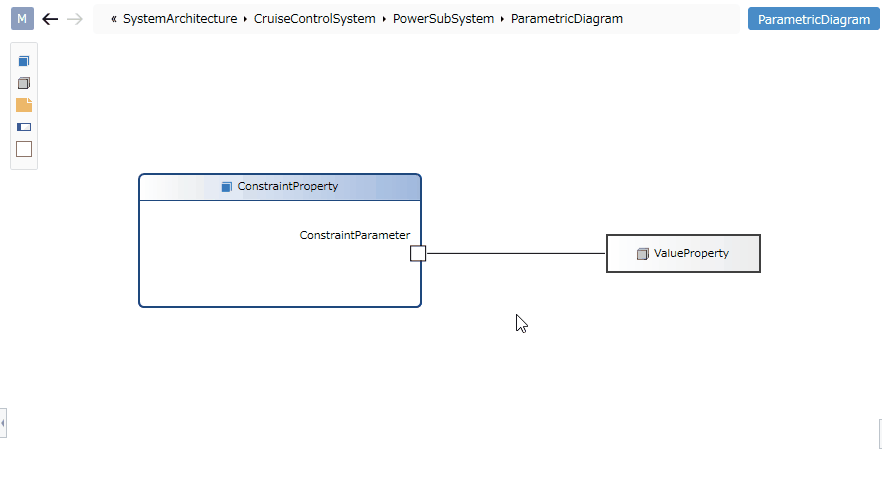
- Select an association.
- Double-click the grayed-out [<<stereotype>>] to enter editing mode.
- Enter the stereotype you want to set, the stereotype will be displayed in the relationship of the parametric diagram, and the stereotype will be set in the relationship.
Restrictions
- Constraint content and type display of constraint parameters differ from the SysML standard.
- The display position of constraint parameters is different from the SysML standard (they are displayed overlapping the nodes).
- You cannot add a constraint parameter that corresponds to a constraint property (it will be automatically reflected by adding it to the type's constraint block).